Judge Dredd first started appearing in the British comics magazine 2000 A.D. in 1977. That magazine has, over the years, featured work by such British superstar comics creators as Alan Moore, Neil Gaiman, Brian Bolland, Grant Morrison, and Pat Mills and John Wagner. At Mills’s urging (he was editor at the time), Wagner created Dredd, along with artist Carlos Ezquerra, who designed his iconic outfit.
The dystopian future world of Judge Dredd is the most popular feature to come from 2000 A.D., and in 1990 it was spun off into Judge Dredd Megazine, which is still being published today. And twice, Dredd has been adapted into a feature film.
In 1995, Sylvester Stallone starred in Judge Dredd, which seemed a good fit at first, especially since Stallone has the perfect jaw for the role, still identifiable even in Dredd’s big-ass helmet. In the 1990s, Stallone had pretty much finished the Rocky and Rambo series (though he’d come back to both in the 21st century), and he was in search of a good second act. Judge Dredd was in the same throw-it-against-the-wall pile he was doing in the 1990s along with Oscar, Stop or My Mom Will Shoot!, Assassins, Daylight, Demolition Man, The Specialist, Cop Land, and so on. (And yes, some of those were actually decent movies, but I can safely say the only one I remember fondly is Demolition Man.)
Unfortunately, the film was beset with difficulties, mostly the tension between Stallone and director Danny Cannon, as the former saw it as an action-comedy, while the latter viewed it as a dark satire. The film found no audience in the U.S., though it did decently overseas, not aided by the storyline breaking one of the cardinal rules of the comic strip, which is that Dredd’s face is never seen.
By 2012, Stallone’s movie was far enough in the past that another shot could be taken, this time with genre Renaissance man Karl Urban in the role. Urban kept the helmet on throughout the film, which automatically made the movie more favorable to the fans of the comic, while screenwriter Alex Garland turned to the comics for specific inspiration for his screenplay.
However, the 2012 movie also failed to find an audience in theatres, though it has performed better on home video platforms, and there are rumblings of a sequel.
“I knew you were going to say that”
Judge Dredd
Written by Michael De Luca and William Wisher Jr. and Steven E. de Souza
Directed by Danny Cannon
Produced by Charles Lippincott and Beau E.L. Marks
Original release date: June 30, 1995
In the future, much of the planet has been left barely habitable. Most of the population lives in Mega Cities. In Mega City I, which is much of the northeast coast, law is enforced by judges, who serve as cops, prosecutors, and judges all at the same time. One of the finest is Joseph Dredd, who helps Judge Hershey and a rookie judge stop a block war, though the rookie is killed. Dredd is emotionless, interested only in enforcing the law.
After the block war is ended, with all the perpetrators sentenced to death, Dredd arrests Fergie, a thief and hacker who had just been paroled, and was hiding from the block war in a drone. Tampering with the drone while on parole is a five-year jail sentence.
Vartis Hammond is a reporter who is on the verge of exposing corruption among the judges. He and his boss are killed by a judge wearing Dredd’s badge and using Dredd’s gun. (Judges’ weapons have biometrics that enable them only to be used by the judge it’s issued to.)
Dredd is put on trial, with Hershey defending him. The chief justice, Fargo, who is Dredd’s mentor, doesn’t want to believe that Dredd would commit homicide, but the evidence is overwhelming. However, when a judge retires, he goes on “the long walk”—bringing justice to the Cursed Earth outside the city until he or she dies. Traditionally, a judge’s last wish before retiring is always followed, and Fargo decides to retire with his last wish is for Dredd to be judged leniently.
Even as Dredd is sent to life in prison, Fargo leaves the city for his long walk.
However, all of this was part of a cunning plan. The new chief justice, Griffin—the one who recommended that Fargo retire to save Dredd—set this whole thing in motion. Years ago, a judge named Rico went a bit crazy and killed innocents. The incident was covered up and Rico was imprisoned in secret, all records of him wiped from the central computer.
Both Rico and Dredd were clones, created from genetic material from the finest of the judges’ council. The project, codenamed Janus, was abandoned and sealed after Rico went binky-bonkers. Now, though, Griffin wants to revive Janus so he can have perfect judges. He freed Rico from his secret imprisonment, had him impersonate Dredd to kill Hammond (Rico and Dredd have the same DNA), and for shits and giggles, he also got his hands on an old robot enforcer.
At Griffin’s urging, Rico foments more chaos, which should be enough to unseal Janus and allow Griffin to tighten the reins, as it were, with his private army of clones. Rico uses his knowledge of judge procedure and his big-ass robot to kill more than a hundred judges. This massacre, and subsequent rioting, leads the council to unseal Janus so Griffin can re-create it.
The shuttle taking Dredd (and Fergie, who winds up sitting next to him) to prison is shot down by a family of cannibals who live in the Cursed Earth. Dredd and Fergie are captured, but they escape and kill the family—with some help from Fargo, who is fatally stabbed. Before he dies, Fargo tells Dredd about Janus, and says that Rico wasn’t just his best friend, he was his brother.
Dredd and Fergie manage to break back into Mega City. He arrives at the council chambers just in time for Griffin and Rico to assassinate the rest of the council, and Griffin is able to frame Dredd for it. Dredd and Fergie escape to the former’s apartment, which has been trashed—and where Hershey is waiting. The three of them determine that Janus must be housed under the Statue of Liberty because power’s being diverted there. By the time they arrive, Rico’s sudden and inevitable betrayal of Griffin has already happened, and the robot has ripped Griffin’s arms and legs off.
Rico and Dredd face off on top of the Statue of Liberty, Dredd manages to toss Rico off to his doom, saying “Court’s adjourned.” Because of course he did.
The remaining judges want Dredd to be the new chief justice, but he insists on staying a street judge. However, Hershey does kiss him. (Insert Hershey’s kiss joke here.) And then Dredd drives off on his cycle.
“Negotiation’s over. Sentence is death.”
Dredd
Written by Alex Garland
Directed by Pete Travis
Produced by Alex Garland, Andrew Macdonald, and Allon Reich
Original release date: July 11, 2012
Dredd is riding his bike through Mega City, chasing a van that is obviously being driven by someone under the influence. The occupants are taking Slo-Mo, a new narcotic on the streets that makes time go by very slowly. (Why this would appeal to junkies, most of whom want to escape from misery, is an exercise for the viewer, unless there’s a concomitant high, though that’s not at all clear from what we see of the drug.)
Dredd takes down the van, which kills two of the occupants. He chases the third into a food court where he stops the third despite his having taken a hostage.
Reporting back to HQ, the chief judge introduces him to a new recruit named Anderson. She didn’t quite pass at the Academy, falling short by three percent, but she’s a mutant—she was born on the outskirts near the radiation zone—who has psychic abilities. The chief wants Dredd to take her out for a day on the streets, see if her telepathy is enough to make up for that three percent. The chief will hire her or not based on Dredd’s assessment.
Central reports a triple homicide in Peach Trees, a two-hundred-story apartment complex. The three bodies were thrown from the two-hundredth floor after being flensed. They were also high on Slo-Mo when they were tossed, so they got to really savor the experience of falling to their doom.
TJ, the doctor who runs the medical center in Peach Trees, explains to Dredd and Anderson that an ex-hooker named Madeline Madrigal, a.k.a. Ma-Ma, runs all the gangs in Peach Trees, having taken over the four rival gangs that had been running things in the complex. TJ tells them where one of the drug dens is, and the judges raid it. Everyone is killed except for Kay, whom Anderson is fairly certain is the one who killed the three guys. Fairly certain isn’t enough, so Dredd plans to take him in for interrogation.
Ma-Ma doesn’t want Kay interrogated, as he knows too much, so she has her thugs kill the people in the control booth, then has her tech nerd patch into the control room and fool Central into thinking they’re running a drill of their lockdown procedures in case of a war. Blast doors lower, blocking the judges’ comms and trapping them inside. Ma-Ma comes over the PA announcing that there are two judges in Peach Trees and she expects them to be killed.
Dredd and Anderson go on the run, with Kay in tow, taking care of all the thugs who try to stop them. TJ refuses to let them into the medical center. Dredd accuses him of taking sides; TJ says there are no sides, that Dredd’s already dead.
They go to the 76th floor at the urging of a woman who just wants them out before any of the thugs get killed, her husband among them. (Anderson sensibly doesn’t tell her that she already put a bullet in her husband’s head.) Once there, Ma-Ma has her techie trap them, then she shows up with massive cannons and blasts the hell out of the entire floor, killing dozens of citizens. However, the onslaught puts a hole in a blast door, which is enough for Dredd to use an incendiary from his multipurpose weapon to blow a big hole. Once outside, their comms clear and they call for backup.
Unfortunately, they have to go back inside, as they’re sitting ducks on the roof. More unfortunately, the backup that arrives is on the take. Even more unfortunately, Kay manages to get out of his restraints and take Anderson hostage.
Luckily, the corrupt foursome aren’t very good at their jobs. One encounters Dredd and doesn’t ask after Anderson even though two judges called for backup, and only a bad guy would know that Anderson was taken. For her part, Anderson is able to get away when Kay makes the tactical error of trying to kill her with her own weapon, which is attuned to her DNA; when he tries to fire it, it blows his hand off. (Anderson kinda planted that idea in his head when she was doing a deep-dive interrogation of his mind.)
Anderson encounters another judge, but her psychic abilities reveal her intentions, and Anderson shoots her too. The remaining two corner Dredd, and even manage to wound him, but Dredd kills one, and Anderson kills the other before he can kill Dredd. They then proceed to the control room where the techie is willing to give up Ma-Ma’s location (the top floor) and the passcode to get into her stronghold (which Anderson reads psychically). Anderson lets him go free, to Dredd’s annoyance, as he’s guilty, but Anderson also saw in his mind how badly he’d suffered at Ma-Ma’s hands. And she figured she’s already failed her assessment once she got taken hostage, so in for a penny in for a pound.
Ma-Ma hooks up a dead-man switch to her arm. If her heart stops, an explosive will destroy the top floors, and likely the entire complex. Dredd is willing to bet that the signal won’t make it through two hundred floors’ worth of concrete, so he shoots her in the gut, gives her a shot of Slo-Mo, and tosses her over the balcony just like Kay did to the three dudes at the beginning on her order. She dies, the building doesn’t blow up, and the lockdown is released.
Anderson gives Dredd her badge and leaves, but then Dredd tells the chief that she passed.
“This is the law; disperse immediately!”
If you take these two movies and average them out, you get the prefect Judge Dredd movie. Each has significant flaws, and each has elements that are perfect.
Dredd is definitely the better adaptation of the source material. The storyline feels like it was more or less lifted from an issue of 2000 A.D., and Karl Urban always feels like he’s playing the character we’ve seen in the comics for forty years. However, the film doesn’t quite make it in terms of the visuals. Judge Dredd at least looks like a science fiction story. You get the sense that this is a crowded futuristic dystopia, with buildings stacked on buildings and everyone crammed together. Yes, it’s supposed to be a Mega City that stretches from Boston to D.C., but it still should have a crowded feel.
We don’t get that with Dredd, which never manages to feel like it’s the future. There’s nothing in the production design that screams “awful future,” it mostly just screams “contemporary Los Angeles.” Worse, Peach Trees never once feels like it’s two hundred stories tall. The production design and look and feel never quite live up to what the script (or the source material) call for.
However, for all that Judge Dredd looks like the comic, the story is a disaster. While the characters are nominally from the comics, they bear only a passing resemblance to them. The three writers of Judge Dredd took the basic setting for Dredd and slapped a bog-standard action-movie plot on top of it. The whole point of this particular future is that judgment is faceless and emotionless. That’s why we never see the judges’ faces. They’re the embodiment of the law. Having Dredd take off his helmet, and keep it off for 85% of the movie is just a disaster. And yes, it’s a movie, and yes, Stallone’s face is famous, but he was doing just fine at the beginning of the movie.
In fact, the first twenty minutes or so of Judge Dredd is easily the best adaptation of the comic strip ever done. It’s better than Dredd, and it’s way better than the rest of the movie it opens. Those twenty minutes prove that this production team could have done right by Dredd, but chose not to. Instead, we get tiresome character beats, a frame-up followed by a betrayal followed by an unconvincing return to glory, a dopey sidekick (seriously WHO THOUGHT PUTTING ROB SCHNEIDER AS THE GOOFY SIDEKICK IN A JUDGE DREDD MOVIE WAS A GOOD IDEA??????????????), a lame love interest (Diane Lane at least does well with the part of Judge Hershey, though the comic book version would never have kissed Dredd in a billion years), and a raving loony bad guy.
There’s a lot of talent in this movie, and I like that they cast both Max von Sydow and Jurgen Prochnow as supervising judges, so we didn’t know which one of them was the bad guy at first. (But it had to be one of them. I mean, it’s Max von Sydow and Jurgen Prochnow, for crying out loud, neither of these two is likely to play a good guy, and certainly both of them aren’t gonna.) Joan Chen is wasted as a scientist who works with the bad guys, who’s mostly there to give Hershey someone to fight in the climax while Dredd is facing off against Rico. Speaking of Rico, Armand Assante is also wasted in a role that literally anyone who was good at overacting could play.
And then there’s Rob Schneider. Sheesh. Though he does do a good Stallone impersonation at one point, which is also the only actual laugh the character gets.
While the cast is less famous in Dredd—only Urban and Lena Headey are what you’d call names—the casting is much stronger. For one thing, Judge Dredd‘s Mega City is populated entirely by white people, while Dredd remembers that if you shove everyone on the east coast together into one big city, you might actually encounter a person of color or twelve. And even if you’ve never heard of Rakie Ayola, she’s better at playing the chief judge than either von Sydow or Prochnow.
Both movies nailed their lead, at least. Stallone does fine when he’s actually playing Dredd in the first twenty minutes, before it goes from being a Dredd movie to a Generic Stallone Action Movie, and Urban is superb, channeling Clint Eastwood’s Dirty Harry (a major influence on the original comics character) to good effect. And both actors have distinct jaws, which is a vital component of playing the role…
Maybe some day we’ll get the perfect Judge Dredd movie that combines the production values of Judge Dredd with the script sensibilities of Dredd. These two movies’ failures don’t bode well, but then the comic book character’s still going strong after four decades, so who knows what’ll happen in another decade or two?
I know I said I’d do The Mask and Son of the Mask this week, but I was in more of a Dredd mood for whatever reason. We’ll dive into the Tex Avery-esque adaptation of the Dark Horse character next week.
Keith R.A. DeCandido urges folks to check out his Patreon, where you can get cat photos, regular TV and movie reviews, excerpts from his upcoming fiction works, exclusive original vignettes featuring his original characters, and more niftiness.










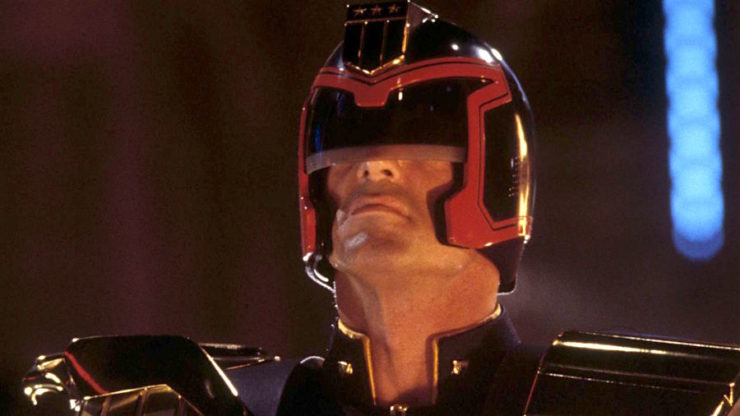
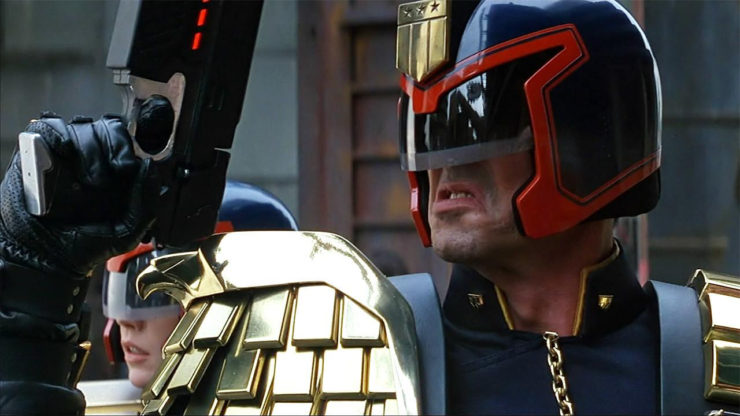
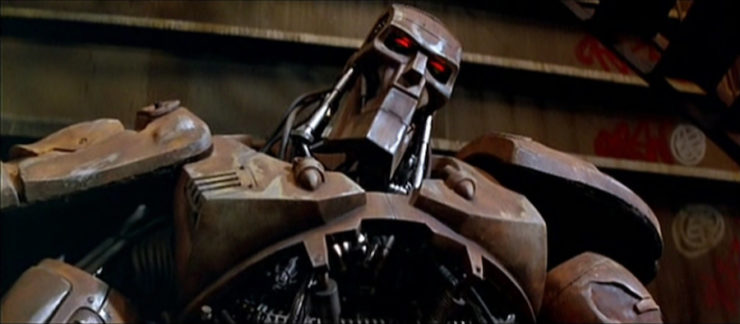
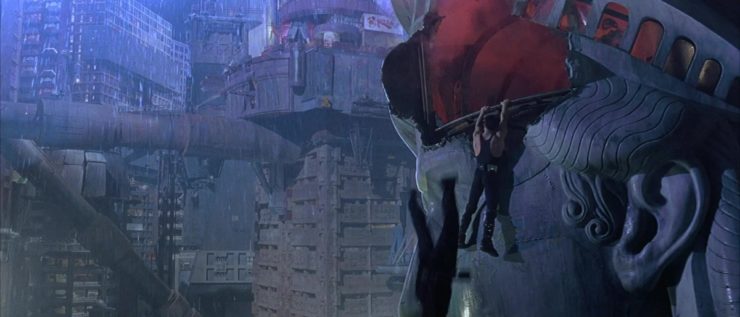

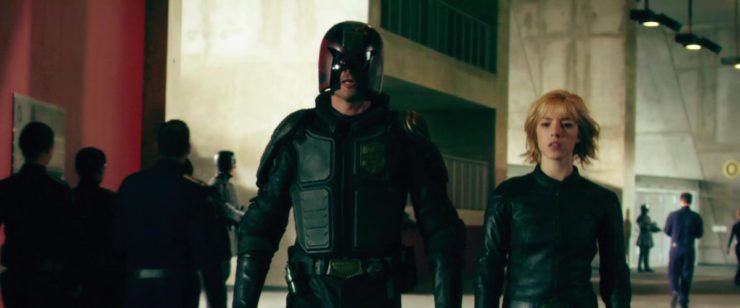
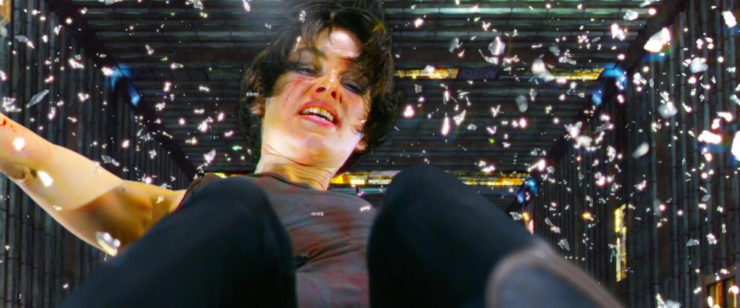
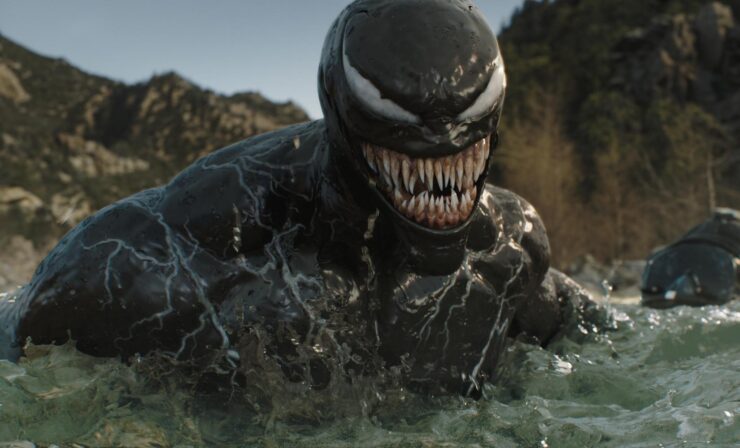
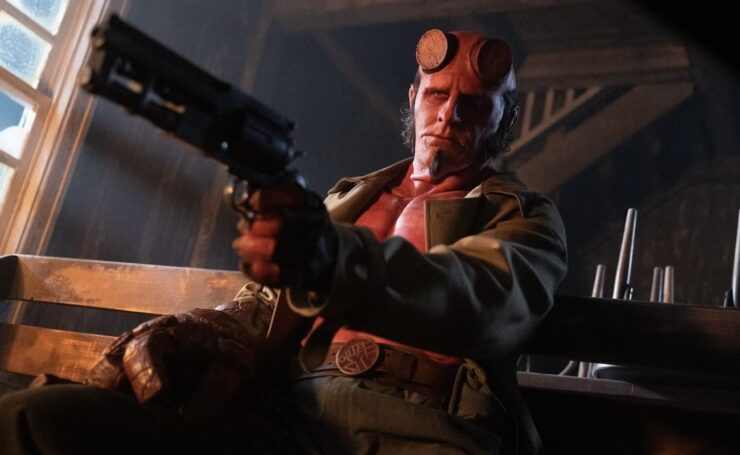
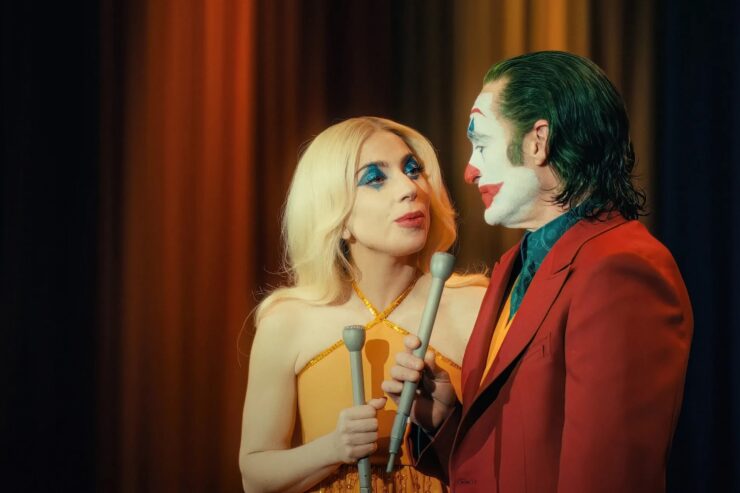
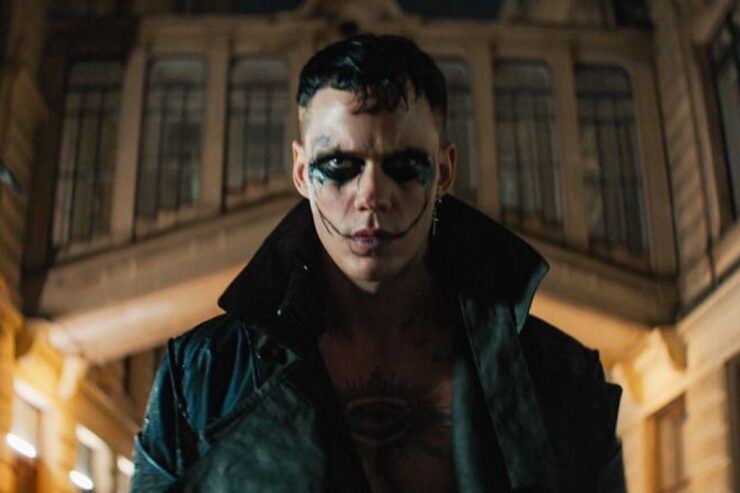
Proposed edit: (seriously WHO THOUGHT PUTTING ROB SCHNEIDER AS THE GOOFY SIDEKICK IN A JUDGE DREDD MOVIE WAS A GOOD IDEA??????????????)
Myself, I really enjoyed the Karl Urban film, warts and all. Amongst other things, it certainly didn’t overstay its welcome, unlike SOME films I could mention.
From the way they showed people’s POV under Slo-Mo, I got the impression that it did also have some kind of euphoric effect, but that might just be me.
I don’t remember the Stallone movie well, but I remember the controversy in fandom over the removal of Dredd’s helmet. I always felt it could’ve worked if they’d kept Dredd’s face covered until he was convicted and was no longer a judge, so that removing his helmet was part of his disgrace. (The animated Justice League series did something similar with Hawkgirl in “Star-Crossed.”) That would’ve satisfied the execs’ demand that Stallone’s famous mug get screen time while hopefully still feeling reasonably authentic to the fans, and actually serving a story purpose as a humiliation that Dredd was driven to reverse or avenge. (Although I believe the comics’ Dredd is implied to have a hideously scarred face.)
As for Dredd, I thought it was a good film for what it was. This kind of violence isn’t something I like, but the film was very creatively directed and executed and there were some very imaginative visuals. The director, I gather, was trying to make ultraviolence beautiful, and while I don’t think that’s entirely possible or desirable, I do respect the technical and artistic ingenuity that went into it.
I was surprised by how ethical Dredd was in his way. He killed without remorse when he believed it was necessary, but refused to kill a suspect unless he was 100 percent certain of guilt. True, the fundamental flaw in his reasoning is that you can never been 100 percent sure of guilt or innocence, and that being both arresting officer and judge and jury is a conflict of interest that makes an objective judgment impossible, so the whole system is fundamentally unjust. But while Dredd makes the mistake of trusting the system, he’s nonetheless scrupulously ethical in his obedience to its rules, and even shows some moments of willingness to bend the rules ever so slightly for the greater good, like when he lets the kids go.
The ending didn’t work for me at all, though. Why would Ma-Ma’s deadman switch be neutralized just by dropping it out of range of the receiver? That makes no sense. If the deadman switch only triggers the bomb if it sends out a signal, then it could be prevented from doing so by destroying the switch — and anything that destroyed the switch would presumably destroy Ma-Ma as well. So if she did design the deadman switch to work that way, it was a completely stupid and self-defeating way of going about it. The way a deadman switch is supposed to work is that it sends a continuous signal whose cessation triggers the bomb — that’s the only way it can actually fulfill its intended purpose of ensuring that Ma-Ma stays alive. Cutting off the signal by dropping it out of range should have set off the bomb and killed everyone, not saved everyone.
Not only was the working of the switch completely illogical, but it was a lazy cheat to give Dredd an easy way out. And that was a missed opportunity. They set up an interesting situation — the infamously lethal Judge is faced with a conundrum that can’t be solved by bloodshed — and squandered the chance to show him rising to the challenge and finding an alternative solution, a way to neutralize Ma-Ma without stopping her heart. I know one can’t expect Dredd to develop a sense of mercy, but just letting him prove he was intelligent enough to solve a problem outside his brute-force wheelhouse would’ve been a nice growth moment for the character.
I think the first 20 minutes of Judge Dredd are indeed some of the best. I don’t mind Schenider as the comic relief, but he doesn’t belong in a film about Judge Dredd. Still, I can’t say he’s the flaw of the movie.
The flaw is the plot itself. A clone program and setting Dredd up? Taking away a mentor? That’s a second-movie material, or maybe third. Possibly fourth. Establishing a hero comes first.
hoopmanjh: I won’t argue with your edit, except insofar as the goofy-sidekick thing is also an issue generally in a Judge Dredd movie regardless of who plays the role.
—Keith R.A. DeCandido
@@.-@ — Yes, I think it’s relatively infrequent that any movie is improved by a goofy sidekick (SEE ALSO: Conan, Scorpion King, etc., etc.) and it’s particularly egregious in a Dredd movie.
I’ve seen Judge Dredd but didn’t remember anything about it (even though I am in secret, unrequitred love with both Joan Chen and Diane Lane). However, reading these plot summaries makes me way more inclined to re-watch that than to see the Urban Dredd. And IIRC Joe Dredd (and Rico) are established as clones fairly early in the comics — at least it was established before I started reading in the 1980s — so to me it seems as worthy a plot as any and in the spirit of Dredd. Looks like they did a better job with the uniform too.
Lord Vorless: vinsentient is correct — the whole clone thing with Rico is straight out of the comic strip.
—Keith R.A. DeCandido
I mean, it’s Max von Sydow and Jurgen Prochnow, for crying out loud, neither of these two is likely to play a good guy, and certainly both of them aren’t gonna.
Arguably they are both good guys in David Lynch’s Dune.
The Stallone movie was okay for the time, perfect visuals, but fails where you mention it, krad. The second one I found entertaining, pretty faithful all around, but a bit limited in its scope. Also, it doesn’t make sense that Dredd gives Ma-Ma some Slo-Mo…
Funny thing, due to Demolition Man, I had Sandra Bullock in my head as Hershey. :)
@3 – LordVorless: But that’s just Dredd: he doesn’t need to be introduced. This is Mega City One, law here is provided by Judges who detain and judge on the spot, jury, judge and executioner. This is Dredd, the best of them. There, done.
6,7, I believe you two are misunderstanding my actual complaint. My problem was with the choice as a timing or pacing issue, not with the “authenticity” of the material itself. IOW, I think it would have worked better for a sequel, after Dredd had had a chance to form up as a character in a movie sense.
Get my point now?
@10/LordVorless: I don’t think I agree. Movies are ideally meant to represent extraordinary, life-changing events in their main characters’ lives, not just routine events. That’s what makes them different from TV episodes or monthly comic books. And movies that save the big stuff for the sequels often tend not to get sequels. So it makes sense for a character’s debut movie to be about the time when things go most wrong for the character, when the life they know is overturned and they have to either get it back or start a new life. So first movies tend to be either origin stories or upheaval stories. The establishment of the character and their status quo is what the first act of the film is for, with the upheaval being the plot point that sets the second act in motion.
Granted, Dredd doesn’t show any major upheaval or change in Dredd’s life, but it is an origin story for Anderson, who’s really the viewpoint character of the movie. That was probably a smarter way to approach it, to look at Dredd from the perspective of the more relatable people around him so that he can remain a fixed point, a catalyst for the others’ arcs.
“Movies are ideally meant to represent extraordinary, life-changing events in their main characters’ lives, not just routine events”
Tell that to yasujiro ozu. Or wim wenders or Celine schamma
I’ve watched the first movie, once at least I think so, vaguely remembering it, but I have watched the 2012 version 6 or 7 times at this point. It’s a great movie. I’ve never read the comics but being a true nerd I do have some passing familiarity with the source material. 2012 seemed just like issue 213 in the ongoing comic series or whatever and that’s pretty good.
11, whether the events that would occur in the hypothetical alternative Judge Dredd movie would be extraordinary or not isn’t going to change my problem with the specific events as did occur. And I’d say movies that blow all the big stuff are the ones that don’t leave room for sequels. I’d even go further and say that movies tend to have a problem in relying on such moments(especially ones that were quite popular with the established fans), rather than getting a solid foundation. In this case, the dramatic punch of a clone, or a betrayal just wasn’t there because it lacked a real footing for Dredd.
You do have a good point about characters around Dredd possibly making for a smarter approach, as he is a bit flat. (I’d say the world itself is more the point of the stories, haphazardly developed though it has been.) Unfortunately, with Stallone as the lead, that wasn’t going to happen. Which actually brings me back to the other thing that bothered me when the movie came out, that Stallone had just been in Demolition Man, which didn’t have quite an identical plot, but it was a bit too similar for me at the time.
@13/LordVorless: As I said, movies that are made with the assumption that they can save the good stuff for the sequels tend to be weak and underwhelming and don’t do well enough to get sequels. After all, it makes no sense to deliberately leave the best parts out of your story. This has been the failing of a lot of aspiring franchise-starters in recent years, like the Josh Trank Fant4stic. It’s arrogant and stupid to assume you’re guaranteed success, that the audience will eat up your movie and want to see more regardless of whether you actually make it worth their while. The first work in a series should always be strong enough to stand entirely on its own, to be a good story in its own right rather than just a sales pitch about how a good story will be delivered at some future date.
I mean, if Star Wars had been made according to the kind of logic you’re advocating, it would’ve ended with the escape from Tatooine, and the rescue of Leia from the Death Star and the battle of Yavin would’ve been saved for the sequels. After all, that was “the big stuff.” Instead, it told a complete story with a satisfactory ending, but it created enough interest in the characters and the world to make the audience want to see more. That’s how you bring back an audience — by satisfying them with a good, complete story. Telling them only half or a third of the story and holding the rest of the story hostage in order to force the audience to come back later is the lazy way out, and it’s a way that often fails, because a fragmentary story doesn’t satisfy the audience enough to make them want more.
One of the things I took from Dredd was the way Urban played him. It comes off to me like this was just another day for Dredd. Get up, put on the helmet, do 8 hours of mayhem, go home, go to bed, rinse, repeat. I don’t think he was surprised or flustered the whole movie.
I’ve yet to see the Urban movie but remember the Stallone version well.
I agree that the clone stuff should’ve been saved for a sequel. In my opinion they would’ve been better off making the first one a straightforward crime story that explores the world of Dredd (And is true to the source material! Keep your bloody helmet on!), and the sequel could’ve played with the idea of replication and repetition—something sequels are known to do! After all, the Dredd of the comics has never been shy about satire, so that could’ve worked.
But we got what we got…20 minutes of good Dredd. Oh well.
@16/Starstruck: I find it unlikely that the studio — and Stallone’s agent — would ever have okayed a movie that kept their megastar’s face covered throughout. Maybe if the first movie had been a hit, that would’ve created enough trust in the franchise for Dredd to have been allowed to keep his helmet on in the sequel. I doubt it would’ve happened the other way, though.
#17 — Yeah, probably so. Which is funny, because Stallone’s career is built on Rocky, a movie series where his face is pounded into hamburger meat over and over!
But like you said, they could’ve at least saved the unmasking for later, making it more meaningful. I’m thinking of the original RoboCop, where we don’t see Murphy’s face again until late in the movie. And there’s great meaning in it.
And come to think of it, RoboCop is the movie where the clone, so to speak, is saved for the sequel. RoboCop 2 is literally in RoboCop 2.
14, You keep bringing up objections that would appear valid, except they’re less connected to my words than you seem to realize. Which is somewhat frustrating for me, since I know you think you have good concerns (and to an extent, you do) but it gets bothersome as I’m spending more of my effort to try to assuage you. I am not saying to tell a story in parts like you seem to think. (Well, not in this case. Obviously it has worked for certain blockbuster franchises. So it’s not all bad. But often they’re not like Dredd at all, they had a very different story to tell. I’ll refrain from digressing further, because of that.) I’m actually talking about how the particular story in Judge Dredd lacked strength because it didn’t have the established character to work with, so it really sputtered out. Failed. Flustered. Went over like a lead balloon.
To me, it was ill-advised to choose what they did, it was not the best part, it was actually not even very good since it was delivered without enough set-up. So it was made worse by trying to do something they didn’t set up. This also occurred with the various Fantastic Four movies, they used parts that would be good, if prepared right, but without that preparation, it fell flat and missed all of the quality that the Comic book stories had developed.
Now if you want whatever story replaces it (and I’ve not gone into my ideas, you may have noticed), to be a good strong story, I’m not opposed to that. Have a complete story. Go for it. Just pick a different line to go down, one that establishes Dredd (or his world, if you can convince a studio to let you do that. I’m dubious. Even more so than Stallone wearing the mask the whole time.), and gives us some satisfaction. Like Star Wars did.
See you may not have noticed, but there’s a reason I said “Possibly Fourth” in my initial comment, because I’ve already considered Star Wars, A New Hope. Even leaving aside the questions of whether Lucas intended his oeuvre from the start(opinions vary), it was sheer chance that gave Lucas a break-out hit beyond all reasonable expectation, and when it comes down to it, the villains in the film are much better done than in Judge Dredd. Tarkin and Vader stand on their own. Sure, Vader killed Luke’s Father according to old Ben, but people can understand killing a parent. Even one you never knew. And of course, the REAL punches were revealed later. When suddenly they mattered. They started to mean something. And then people make fun of it!
15, that would certainly be faithful to the comics. Wasn’t even a big deal for Dredd. Routine business.
16, well, depending on what you mean by a straightforward crime story anyway, but since you’re saying stay true to the source, I’ll give you the benefit of the doubt and assume you mean something solved the Dredd Method, rather than some boiler-plate detective thriller.
I am sorry, but the visuals in Dredd are amazing. If you saw it on release on the big screen in 3D, the cinematography of the slo mo scenes was absolutely mesmerizing. Sure, we do not see a lot of high tech. But the point is that even if it existed, the poor are not going to see much of it.
@19/LordVorless: “I’m actually talking about how the particular story in Judge Dredd lacked strength because it didn’t have the established character to work with, so it really sputtered out.”
I get that that’s what you’re saying, but my point is, having previous movies is not the only way to establish a character well. As I said, a well-written movie can establish a character and their world perfectly well in its first act, so that we have all the setup we need for the upheaval in the second. The problem with the argument that a story can only work if it’s a later installment in a series is that there are many standalone stories, or first stories in a series, that work perfectly well on their own, without anything prior. For instance, look at what a fantastic job Back to the Future does of establishing Marty, Doc, and absolutely every important plot and character point in its first act. It’s a master class in efficient screenwriting.
“there’s a reason I said “Possibly Fourth” in my initial comment, because I’ve already considered Star Wars, A New Hope. Even leaving aside the questions of whether Lucas intended his oeuvre from the start(opinions vary)”
There’s no opinion there. It’s a well-documented fact that Lucas’s early drafts of Star Wars called it Episode I of The Adventures of Luke Starkiller, and it wasn’t even given the “Episode IV: A New Hope” subtitle until its 1981 re-release. As late as 1978, Lucas told Starlog that the sequel was originally going to be called “Episode II,” but they changed it to “Episode V” because by that point they’d come up with the idea for three prequels. So any claim that the original film was always meant to be the fourth chapter is not an “opinion,” it’s just wrong.
21, I’m even more baffled by your response, would not my point about having a previous movie indicate an awareness that a story can, on its own, establish a character? Was this escaping you? And actually, your example of the BTF trilogy gives an example of one that’s more structured towards the way I’m suggesting. The first had Marty going back to the past, the second had somebody steal the time machine to change the past, the third had Marty recovering his wayward Mentor, except not(except yes!), and…well, your example just emphasized my position even better.
So, thanks, I guess?
And well, for Star Wars, when I said oeuvre, I wasn’t saying what it seems you thought I was, I was talking more about Lucas planning sequels (or a series) at all, which I’m not sure about when that happened, or how to consider them in the development of the story, like the Journey of the Whills, and all the various treatments and drafts. Sorry if it was my including the now identified as Episode IV: A New Hope confused you. My bad there.
Oh, and Splinter of the Mind’s Eye, the “original” sequel of Star Wars. Don’t know why I forgot to re-add that bit, I had it in earlier, but I rewrote my sentences.
I paid money to see Judge Dredd in the theater in 1995. The opening narration is read by James Earl Jones, which surprised me at the time. That’s the only positive thing I have to say about that movie.
One of the reasons that Dredd underplayed in the UK was that just before its release, a film with an almost identical story (The Raid) was released to great critical and popular success.
I’ve seen both films. I found Judge Dredd to be utterly forgettable, while Dredd is one of my favorite films from the last decade and confirmed my liking for Karl Urban as an actor. He was very nearly perfect for the role.
It’s been a little bit of time since last I saw it, but from what I recall the aesthetic of Dredd was pretty solid. Especially once it got inside the Hab there was a feeling of claustrophobia and constrained space despite also showing just how big the structure was.
Regarding Dredd giving Ma-Ma Slo-Mo before tossing her over, my impression was that he wanted to slow her metabolism enough that the stress of getting shot and thrown over the side would not prematurely trigger her dead-man switch. There was also an element of judicial symmetry in having her punishment fit at least one of the crimes for which Dredd found her guilty.
@26/Porphyrogenitus: Again, though, that’s the opposite of how a dead-man switch is supposed to work. It’s supposed to be triggered by the cessation of metabolic activity, not its increase. The “dead” isn’t metaphorical, after all. The idea is “You can’t kill me because the bomb will go off if my life functions stop.” If, say, the switch goes off if it stops detecting her heartbeat, then slowing her heartbeat too much might trigger the device.
And if a dead-man switch is designed in such a way that there’s a loophole that deactivates it by killing the holder, then either its builder designed it badly or the screenwriter cheated to give the hero an easy out. Because, either way, that literally defeats the exclusive purpose of a dead-man switch.
(Well, at least this particular kind of dead-man switch, the kind meant to keep an enemy from killing its wielder. I believe the original kind of dead-man switch was a lever that a railroad engineer would need to hold continuously, so that if the engineer suddenly had a heart attack or was shot or something, the release of the lever would cause the train to brake rather than running out of control.)
It’s probably not clear in this case, but I believe it’s a matter of blocking a wireless signal that actives on her death to set off the explosives, rather than the trigger being itself being circumvented. The Slo-Mo was just to make the fall last longer for her.
It has been a while since I saw the movie, but that’s the impression I had.
Obviously it wouldn’t have worked if the whole building had been rigged, but apparently it was just the top.
@28/LV: Yeah, but as I said, that’s a dumb-as-bricks way to design a dead-man switch, because it doesn’t prevent her death if her death happens in a way that also destroys the switch. A smarter design would be one that sends a continuous signal whose cessation would trigger the bomb. The writer cheated and gave the switch a huge loophole/design flaw in order to give Dredd an easy way out, and that really ruins the climax for me. I mean, he had no way of knowing the switch was designed that way. It’s a stupid way to design it and he didn’t know the designers were stupid. For all he knew, killing her would blow up the building. Of course, this is Dredd we’re talking about, so maybe he just didn’t care how much collateral death he caused as long as he got his perp. But then they should’ve said so.
29, your objection was phrased a bit differently(there is no loophole where it deactivates if the user is killed, the problem was a technical one of the trigger signal not reaching the explosive charges, but perhaps it was a choice of words, I wouldn’t call it a loophole by any means), but while you can possibly say it would be more secure in some ways, then the problem with a live continuous signal is what happens when you get an out-of-service, and what happens? WHAM!
That’s not better for Ma-Ma. She really doesn’t need a live-loop circuit, and I doubt any of her employees would want that either.
You may say it’s a contrivance, or luck, you might even say Judge Dredd took a gamble with it, but then, that fits entirely with his character, so I’m not troubled, though I wouldn’t have objected to him making it explicit.
@30/LordVorless: “(there is no loophole where it deactivates if the user is killed, the problem was a technical one of the trigger signal not reaching the explosive charges”
You’re missing the point, even though I already spelled it out. If the explosion could be prevented by cutting off the signal, that allows for the possibility of killing Ma-Ma in a way that prevents the switch from sending the signal, e.g. blowing her and it up in an instant, or putting her in a Faraday cage and then shooting her — or dropping her off a very high ledge. Again, if you’re designing a dead-man switch, your goal is to design it in such a way that your enemy can’t kill you in any way whatsoever. If the design allows you to be killed in a way that keeps the switch from triggering, then that defeats the entire purpose of the switch. That’s why it’s preferable to use a continuous signal whose cessation or interruption sets off the bomb.
31, nope, not missing it, in the next bit after what you quoted, I addressed the lack of desire that Ma-Ma might have for a continuous-loop system, because what happens when you get an out-of-service?
Well once again, it’s WHAM!
Was the meaning unclear? It means the floors blow up.
Can Ma-Ma risk that? Apparently not. After all, she lives there. So the choice of a signal-trigger instead. Even granting how the device could be activated, is she really going to take the risk? It’s a decision.
Is it the one you’d have made? Seemingly not. And she might not have thought of it either.
Was it a risk Dredd was taking because he could have been wrong about how the device worked? Probably. In keeping for the character though.
Could the dialog have better reflected the actual situation? Sure. But I don’t know where that problem came up(haven’t looked at the script, or the graphic novel version, though if you want to do so yourself, go ahead and report back), and to be honest, if you think about it, it’s a non-effective means on Ma-Ma’s part anyway. (Or yours.)
Why? Because Dredd had numerous means of subduing her(or the hypothetical you), and all they have to do is send in the EOD squad while she’s sedated. Problem solved! Ok, I can’t take sole credit for that idea. But I guess it wasn’t action movie enough or something.
Still, if you should ever become a drug kingpin in a some hellish post-apocalyptic future, don’t count on your plan working either.
Of course, I wouldn’t be at all surprised if whatever thug she had do it, balked at the thought, but then, were they even competent enough to rig the explosives and set up the device properly anyway? How’s Ma-Ma going to test it? Watch something not blow up?
Now wouldn’t that be a cop-out ending. It’d make me laugh though.
Oh, almost forgot, if you want, you could just have the blonde telepath shout “She’s lying Dredd, ice the bitch!” instead.
Of course, mostly then Dredd would have said “I was going to do that anyway” and…
@krad regarding your (valid) point about Dredd’s visuals and the seeming sparseness of Mega-City 1 my take was always that this intended as The Big Meg in the process of becoming the insane, over wrought metropolis the Stallone film and comics showed off – so the Bloks we see are the first few with more to come – mainly based on the fact this is seems to be a younger version of Dredd than we first met in 2000AD (as you watch the film it’s apparent that Dredd, whilst he has a rep amongst his fellow Judges, is not yet the legendary Ol’Stoney Face we are more familiar with), as is Anderson….
Comic book based but super-hero only in the very loose definition being applied by this series/author.
@35/_FDS: I think we’ve moved beyond the strict “superhero” category, since neither Barb Wire nor Tank Girl would qualify.
34, I believe there were some words from the writer/producer somebody on the production issues since they had to save their money with interior scenes and couldn’t do as much outside because of the budget.
35, yes, Dredd is mostly a Super-hero more in the sense that nobody should get away with the crap he pulls.
I saw Dredd on Netflix, just because. I thought it might be another one of those just to make time.
It turned out to be quite good, one thing that Hollywood is doing right these days is to portrait misery, specially Third World levels, really accurately and realistically.
I just wanted to chip in and say that I loved Karl Urban as Dredd – he really got the attitude right.
It’s a shame the film was released alongside The Raid, yet another one of those serendipitous coincidences rather than the usual hollywood undercutting. It’s also a shame that the budget was so tight – the opening sequence and the external shots feel a bit cheapened, Mega City One is more of a Large City-To-Be One.
But I like the idea of @34 with the this is early in the development of the City, hence the young Dredd and Anderson.
Following on from Mayham’s point, not only was Dredd realised shortly after The Raid, it was also only released in a 3D print at the cinema. It was made when Avatar was dominating the box office and the distributers thought it would be a great to cash on in 3D. By the time Dredd hit cinemas 3D had lost its shine.
The only thing the 1995 version got right was the occasional moment of (incredibly) dark humour that Dredd should have. After the first 20 minutes, he’s arresting the irritating sidekick for escaping a firefight by hiding inside a cleaning machine, thus damaging city property. Instead, Dredd suggests, he should have simply jumped out the window.
“But we’re fifty floors up! It’d be suicide!”
“Maybe.” (beat) “But it’s legal.”
Very close to Dredd in the comics, counselling a would-be jumper on a ledge:
“Don’t do it, citizen! Littering the streets is an offence!”
the seeming sparseness of Mega-City
According to the film it reaches from Boston to Washington DC and has a population of 800 million. At Manhattan densities (and Manhattan isn’t that dense; it has parks and low-rise buildings), that would fit into 12,000 square miles – roughly the same size as the state of Maryland. Or, to put it another way, if MegaCity One is a rectangle of Manhattan-density with one end in Boston and the other end in DC, the rectangle is only thirty miles wide. So either MegaCity One is really narrow, or it’s not even as dense as Manhattan.
MegaCity One is actually one block wide.
@42/ajay: If MegaCity One is a megalopolis that grew out of the existing DC-to-Boston urban corridor, then it makes perfect sense that it would be only 30 miles wide or less, just as that corridor really is:
http://luminocity3d.org/WorldPopDen/#7/41.162/-76.503
After all, the geography of the region keeps it narrow, since it’s between the Atlantic coast and the Appalachian Mountains. And there are good reasons for urban areas to stay close to oceans, rivers, etc.
As you can see from the map, the idea of a single megalopolis stretching that whole distance is just an extrapolation from the real concentration of urban centers that already exists there. Judge Dredd is hardly the first work of science fiction to predict that such urban corridors would eventually metastasize into continuous megalopolitan swaths.
Urban’s Dredd was MUCH better than Stalone’s. I liked that it was just another day in the life of Judge Dredd.
I’ve been putting off seeing Urban’s Dredd, and one of the reasons is that I can’t find out where it stands on one of the key aspects of a Judge Dredd story, which is the dark humour that ajay @@@@@ 41 mentions. It’s never far away in the Judge Dredd comics, and I’m pretty confident that I would find 90 minutes of Judge Dredd completely insufferable without it, but if there’s any of it in the movie, I’ve never found a review that’s seen fit to mention it.
anobium: There’s more dark than there is humor, I’m sorry to say.
—Keith R.A. DeCandido
At the moment it looks like it will be a TV series, and interestingly one focusing on Mega City One and the Judges rather than Dredd per se. Karl Urban is down to return on a recurring (but not regular, due to other movie commitments) basis as Dredd, who in this iteration would be an off-screen badass who only shows up when things get really real.
One problem is that it would be very expensive and Netflix has committed to two seasons of a big, futuristic show set in a massive city (Altered Carbon), which means that most likely Amazon or Apple TV would have to pick it up, as no-one else has the pockets for it.
DREDD occasioned this memorable anecdote.
I saw it at a Miami preview, where before the show Karl Urban himself got up to say that he was thrilled by the huge turnout and that he hoped we all enjoyed what he saw. No more than that.
We saw the film.
Afterward, people in my row were saying, “Who was that handsome young man? He had to be somebody, to get up in front of us like that.”
I replied, “That was the star of the movie you just watched.”
“Really? Which role did he play?”
I couldn’t believe this conversation. “He played Dredd. The helmeted Judge.”
“Well, how were we supposed to know that?”
This is what happens when you wear a big-ass helmet and speak in a whispery monotone for the whole movie, I guess…….
—Keith R.A. DeCandido
I’d say Urban is easier to recognize in Dredd than Andy Serkis is in most of his feature film roles…
9@@@@@ MaGnus “Funny thing, due to Demolition Man, I had Sandra Bullock in my head as Hershey. :)” actually me too… he
didn’t see Urban’s version but I couldn’t see him as Judge Dredd after Stalone because even though he might have the jaw, the other thing is the required “presence” , Stalone fits more for the role of an iconic feared Judge/cop than Urban (in my imagination since I didn’t see 2012 version). I didn’t read the comics, so I’m not let down with his helmet of, so except some other critics Krad had about Rob and other things, I remember it as a decent take.
Having seen both these films, I’d just like to say that one would really love to see Mr Stallone & Mr Urban team up as Joe & Rico Dredd – the latter yet another clone who, to date, seems to be sticking to the straight & narrow.
Also that Mr Alan Silvestri’s soundtrack for JUDGE DREDD is a personal favourite – it really conveys the proper “He’s our hero, but he’s not the good guy” energy that drives so much of the ‘Justice Department’ of Mega-City 1.
Oh, I nearly forgot: this year’s Christmas edition of 2000 AD had a story where the original & his two cinematic counterparts team up – it’s not very inspired, but is quite amusing.